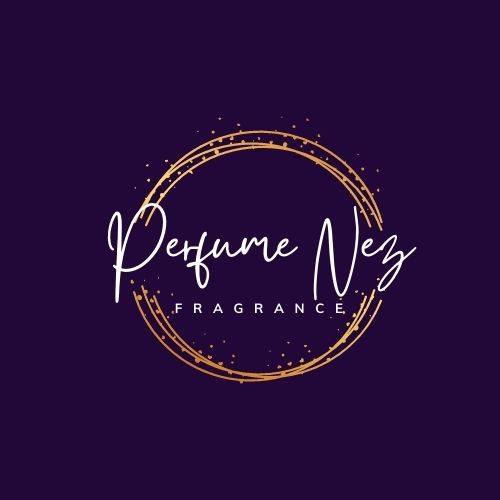How to Tell If an Eau Sauvage Bottle is Authentic?
Click For Affordable Inspired Perfume Alternatives
When investing in a luxury fragrance like Eau Sauvage, ensuring the authenticity of the bottle is essential. Counterfeit perfumes are prevalent in the market, and purchasing a fake can lead to disappointment both in scent quality and overall experience. Knowing how to identify genuine Eau Sauvage bottles helps protect your investment and guarantees you enjoy the true essence of this classic fragrance. In this guide, we’ll explore the key indicators that distinguish authentic Eau Sauvage bottles from counterfeit ones, providing you with practical tips for verification.
How to Tell If an Eau Sauvage Bottle is Authentic?
1. Purchase from Reputable Sellers
The first step in ensuring authenticity is buying from trusted sources. Official brand boutiques, authorized department stores, and reputable online retailers are the safest options. Be cautious of third-party sellers or marketplaces that have questionable reputations.
- Always verify the seller’s credentials and reviews before making a purchase.
- Check for official retailer logos and certifications on the website or store signage.
- Avoid deals that seem too good to be true; heavily discounted bottles are often counterfeit.
2. Examine the Packaging and Outer Box
Authentic Eau Sauvage bottles come in high-quality packaging with meticulous details. Carefully inspecting the box can reveal signs of authenticity or counterfeit.
- Material Quality: The box should be sturdy, with crisp printing, vibrant colors, and no blurry images or misaligned text.
- Logo and Fonts: Ensure the Eau Sauvage logo is correctly spelled, clear, and properly aligned. Counterfeits often have misspellings or font inconsistencies.
- Holograms and Security Seals: Some authentic boxes include holographic stickers or security seals that are tamper-proof. Verify their presence and authenticity.
- Serial Numbers and Barcodes: Check for a barcode and serial number printed on the box. Cross-reference these with the bottle and retailer if possible.
3. Inspect the Bottle Design and Label
The bottle itself is a crucial indicator of authenticity. Pay close attention to design details, printing, and craftsmanship.
- Shape and Size: Eau Sauvage bottles have a distinctive, elegant shape. Compare the bottle’s dimensions with official images from the brand’s website.
- Material Quality: The glass should be thick, smooth, and free of bubbles or imperfections. Counterfeit bottles often use cheap, lightweight glass.
- Label and Logo: The label should be perfectly aligned, with crisp printing and correct fonts. The Eau Sauvage logo must be clear, with no smudges or fading.
- Cap and Spray Nozzle: Authentic bottles feature a high-quality cap that fits snugly. The spray nozzle should operate smoothly and evenly dispense fragrance.
4. Check the Perfume Color and Bottle Seals
Authentic Eau Sauvage typically has a consistent, clear color, but variations can occur with different batches. However, the fragrance should not appear cloudy or discolored.
- Color Consistency: Compare the perfume’s hue with official images or previous bottles. Significant differences may indicate a fake.
- Seals and Tamper Evidence: The bottle should have a secure, intact seal or shrink wrap. Broken or missing seals are red flags.
5. Verify the Fragrance and Scent Quality
While this step requires opening the bottle, it’s crucial in confirming authenticity. Counterfeit fragrances often have a different scent profile, weaker projection, or unpleasant odor.
- Initial Spray: The fragrance should be rich, well-balanced, and true to the original Eau Sauvage scent.
- Longevity and Projection: Authentic Eau Sauvage typically lasts several hours and projects subtly but noticeably.
- Compare with a Known Authentic Bottle: If possible, compare the scent with a verified genuine Eau Sauvage to spot discrepancies.
6. Look for Authenticity Markings and Batch Codes
Most genuine Eau Sauvage bottles have batch codes or serial numbers printed on the bottom or side of the bottle or box. These codes can be verified with the manufacturer or online databases.
- Location of Codes: Usually found etched or printed discreetly on the bottle or packaging.
- Verification: Use online tools or contact the brand’s customer service to verify the batch code’s authenticity.
- Consistent Formatting: The format of batch codes varies; familiarize yourself with the typical style used by the brand.
7. Be Aware of Common Counterfeit Indicators
Some red flags can help you identify fake Eau Sauvage bottles quickly:
- Misspelled words or poor printing quality on the box or label.
- Unusual or inconsistent bottle shape or size compared to official images.
- Weak or uneven spray mechanism.
- Ill-fitting cap or loose parts.
- Unpleasant or off-scent fragrance, indicating counterfeit ingredients.
- Price significantly lower than retail value.
Conclusion: Ensuring You Purchase Authentic Eau Sauvage
Authenticity is paramount to fully enjoy the luxury and craftsmanship behind Eau Sauvage. By paying close attention to packaging details, inspecting the bottle, verifying codes, and purchasing from reputable sources, you can significantly reduce the risk of buying counterfeit products. Remember, when in doubt, consult official brand resources or contact customer service for verification. Protect your investment and indulge in the genuine Eau Sauvage experience—an aroma that has captivated fragrance lovers for decades.
Buy Perfumes - Best Online Retailers
Click For Affordable Inspired Perfume Alternatives
Click For The Best Niche Perfumes & Decants
Pheromone Perfumes - Confidence, Attraction & Appeal - Click For More
Home Fragrances & Candle Warmers - Click To Scent Up Your Spaces Today!
